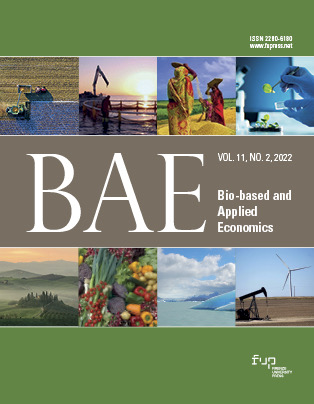Published 2022-08-30
Keywords
- pesticides,
- impact indicators,
- TEIQ,
- pesticide externalities
How to Cite
Abstract
This study investigates how Pesticide Risk Indicators (PRIs) can be applied to help develop sound economic policies. We modified one of the numerous PRIs proposed over the years, the Environmental Impact Quotient (EIQ), originally developed for the fruit industry, to consider co-formulants and adjuvants. The new formula includes three components representing the externalities of farm worker risk, consumer risk, and ecological risk. It also considers the potential externalities of the use of pesticides on residents living near the farms where these products are used. We applied the modified EIQ to two areas located in central Italy (the Chiana Valley in Tuscany and the Tiber and Upper Tiber Valleys in Tuscany/Umbria), surveying a sample of farms to determine the quantity and types of pesticides used on five crops: durum wheat, soft wheat, corn, tobacco, and olives. After calculating the impact quotient, we used data from a survey conducted in a different Italian region regarding the willingness to pay (WTP) for a pesticide-free environment and determined the WTP for even minimal changes in that quotient. Using those results, we simulated the changes in welfare (calculated as changes in willingness to pay) that would result from modifying the amount of land used for each crop. Our findings indicate that the proposed WTP indicator may have broad utility and that its application may lead to enhanced awareness of the consequences of pesticide use in farming.







